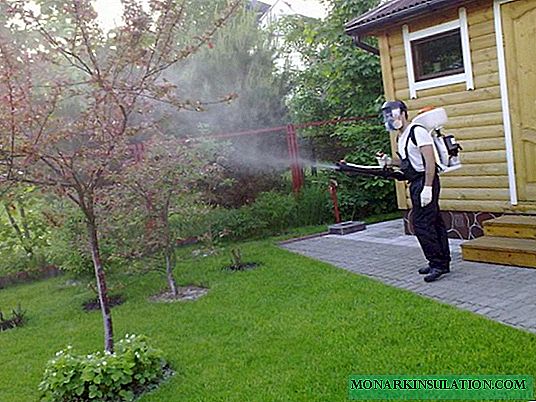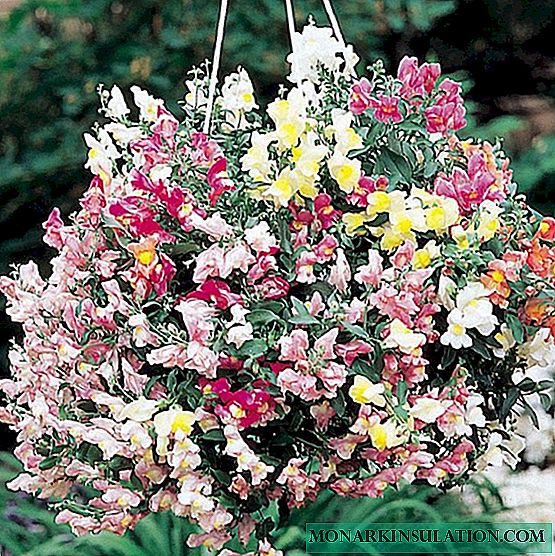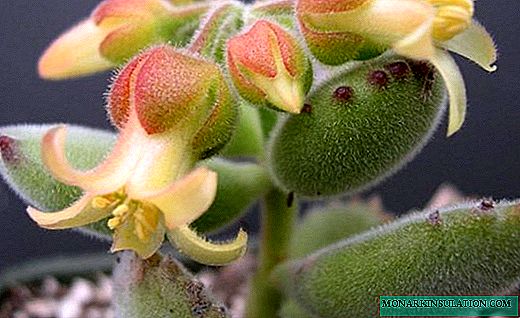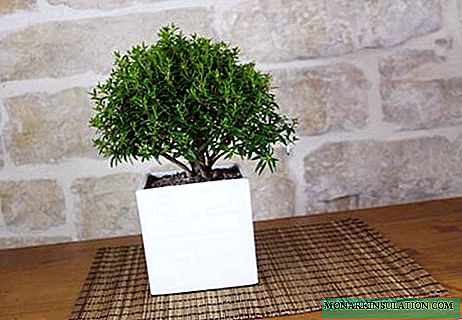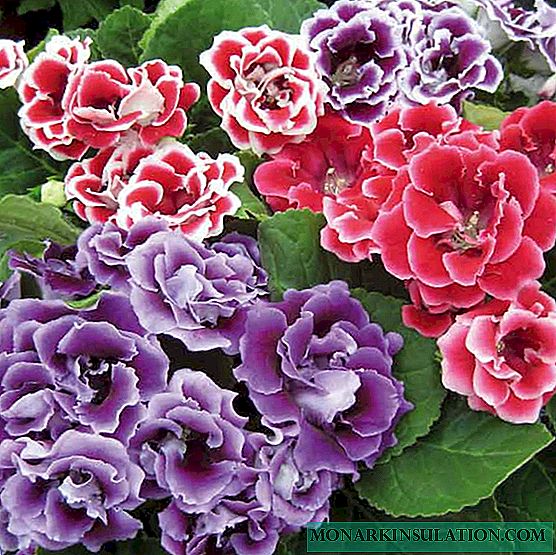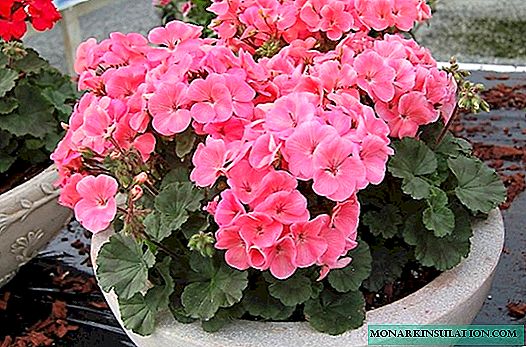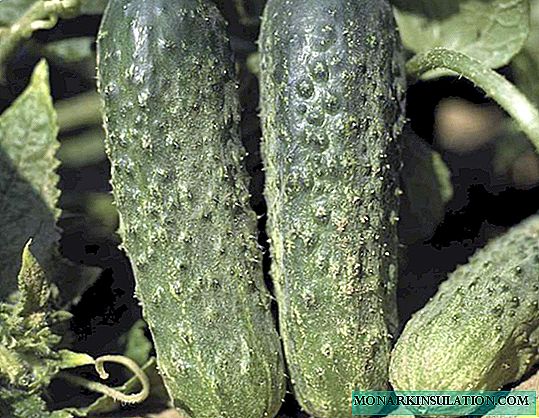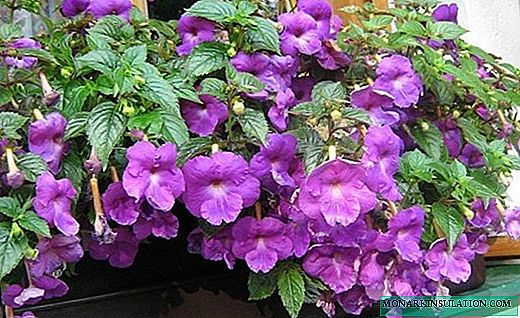Achimenes is a herbaceous perennial that lives in the bright tropical forests of South and Central America. It belongs to the Gesneriaceae family. A lush low bush is covered with embossed leaves, and during flowering, among the lush greenery, many large, similar to gramophone, buds of saturated colors bloom. To lush vegetation pleased with extraordinary beauty, the rules for the care of Achimenes should be followed very carefully.

Plant description
Ahimenez is a herbaceous perennial with fleshy shoots. The height of an adult plant usually does not exceed 30 cm. An unusual rhizome with oblong nodules (rhizomes), which are covered with small scales, develops underground. Soft, branched stems grow above the surface of the soil. At first they develop vertically, but later wilt. The surface of the shoots is covered with dark green or reddish skin.
The stems are covered with rare petiole leaves. On top, a smooth, shiny sheet can be painted in dark green, pinkish or purple. On the back there are short villi. Leaflets have an oblong shape with serrated sides and a pointed edge. The relief of the veins is clearly visible.
In late May, a lot of flowers appear on the bush. Each corolla has a long narrow tube and 5 strongly bent, divided along the edges of the petals. The buds are located individually in the axils of the leaves. The diameter of the flower is 3-6 cm. The color of the petals is white, yellow, pink, purple, scarlet. Flowering continues until the end of September. At home, achimenes can bloom twice.












Life cycle
In early spring, when the average daily temperature rises and daylight hours increase, young sprouts emerge from the rhizome. They are rapidly increasing in size. By May, flower buds are already visible and buds are starting to form. Flowers bloom in early summer. During this period, the plant needs abundant watering, bright light and regular fertilizers.
In early autumn, the flowers gradually fade and the growth of shoots slows down. By mid-October, the leaves gradually turn brown and crumble. Shoots also dry with them. For wintering, only rhizomes remain. During dormancy, the plant can be stored in a dark, cool pantry. The soil is only occasionally moistened with small portions of water along the edge of the pot.

Types and varieties of Achimenes
The genus Achimenes has about 50 species and many decorative varieties. Only a small part of them is available in flower shops. A much larger assortment is presented in online stores, so flower growers prefer to buy ahimenez online, studying photos in the catalog. Among all the diversity, the following species are considered the most interesting.
Ahimenes long-flowered. The plant forms a sprawling bush about 30 cm high. Lying, pubescent stems branch weakly. They are covered with whorls of oblong or lanceolate leaves. The leaf length is about 9 cm. During flowering, large (up to 6.5 cm in length) violet-blue flowers bloom on the Achimenes. Popular varieties:
- Chiapas - petals are painted in light purple;
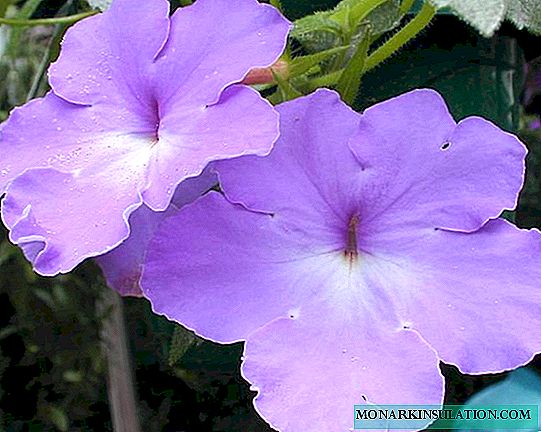 Chiapas
Chiapas - Juaregia - a purple speck is present at the base of the white petal.
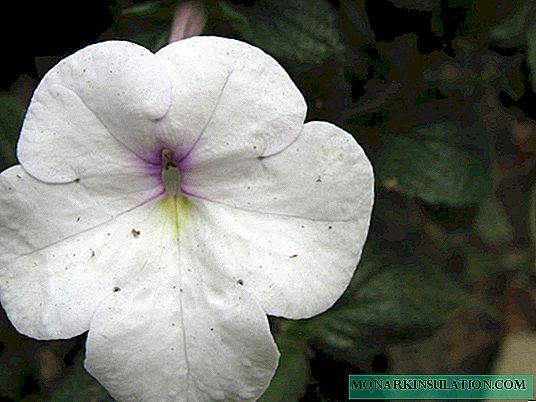 Ahimenez Juaregia
Ahimenez Juaregia
Ahimenez is fringed. The plant has a flower shape. The wavy edges of the petals resemble lush fringe. The color is dominated by shades of pink or white.

Achimenes hybrid. Variety with abundant flowering and medium-sized buds. Representatives obtained by interspecific crossing. Popular varieties:
- Ambroise Verschaffelt - on the white petals are thin radial veins;
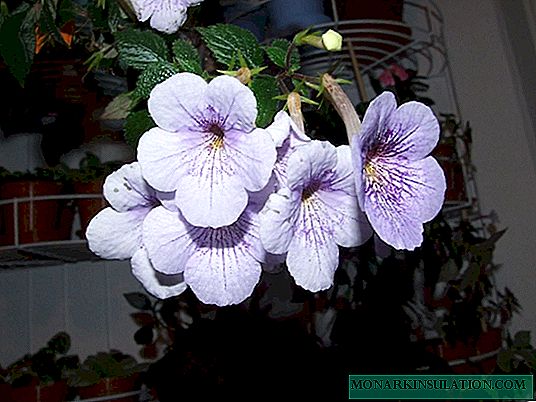 Ahimenez Ambroise Verschaffelt
Ahimenez Ambroise Verschaffelt - Rose Pink - flowers of saturated pink colors;
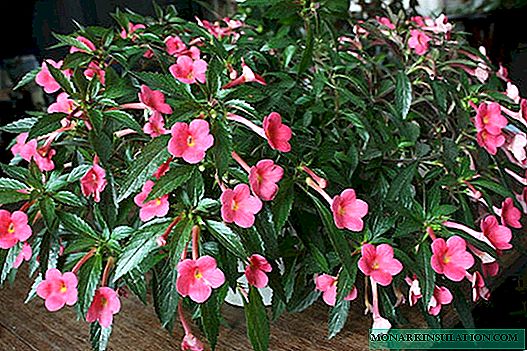 Ahimenez Rose Pink
Ahimenez Rose Pink - Blue - small light blue flowers;
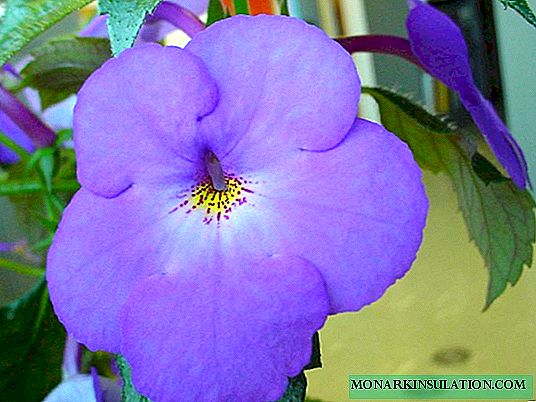 Ahimenez Blue
Ahimenez Blue - Yellow Beauty - tubular flowers with a deep pharynx are painted in yellow or terracotta color.
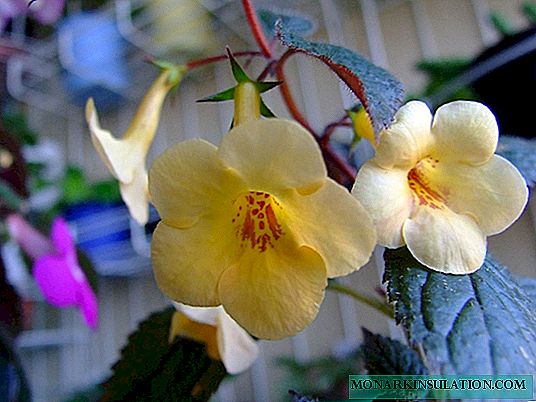 Ahimenez Yellow Beauty
Ahimenez Yellow Beauty
Ahimenez is large-flowered. This species is the largest. The height of the bush reaches 60 cm. Large bluish-green leaves are interspersed with bright gramophones of flowers with a diameter of up to 6 cm and a tube length of up to 10 cm. Flowers are formed in the axils of the leaves along the entire length of the stem, they are colored red.

Breeding methods
Propagation of achimenes by a vegetative method is the most convenient. It also allows you to save species and varietal characteristics of the plant. Each tuber in a year gives 3-5 children that can become independent plants. In early spring, before shoots are formed, Achimenes rhizomes are dug out of the ground and planted in separate small pots. If you need to get a lot of plants, you can cut each rhizome into 2-3 parts. Place the cut sprinkled with crushed charcoal.
In May-June, Achimenes can be propagated by cuttings. To do this, cut young shoots 8-12 cm long with 1-2 internodes. They are rooted in a container of water. It is recommended to change the fluid every 1-2 days. When small roots appear, the plant is planted in fertile soil. You can immediately root the cuttings in the ground, but then for 7-10 days, the seedlings are kept under a cap.

Seed propagation is the most time-consuming. In March, the seeds are sown without preliminary preparation in a container with a sand-peat mixture. The soil is sprayed with water and covered with a film. Keep the greenhouse at a temperature of + 22 ... +24 ° C. Shoots appear within 12-16 days. With the formation of two real leaves, seedlings dive into separate pots.
Plant transplant
Achimenes transplantation is recommended annually. During dormancy, rhizomes are not dug up, but kept in old soil. In February, before the start of active growth, they are removed and placed in fresh land. In a new pot, pebbles, expanded clay or brick fragments are laid to the bottom. The soil is made up of:
- sheet soil (3 parts);
- soddy soil (2 parts);
- river sand (1 part).
First, the earth is poured into the pot at 2/3 of the height, and then rhizomes are horizontally placed. 5-10 mm of earth is sprinkled on top of them and gently watered. Before the formation of young shoots, it is useful to cover the pots with film or glass.

Care Rules
Achimenes at home requires careful handling. The plant prefers bright diffused light. Pots can be placed on the eastern or western windowsills, as well as in the depths of the southern room. With a lack of sunlight, the stems are very elongated and exposed, however, sunflower is also undesirable.
The optimum air temperature is + 22 ... +25 ° C. During the period of active vegetation, it should not fall below +20 ° C, otherwise the plant will begin to hurt. It is useful to take the Achimenes to the garden or balcony for the summer. They are trying to provide stable conditions. Bushes do not tolerate sharp night cooling and drafts. During dormancy, rhizomes can be kept at + 10 ... +15 ° C.
For tropical plants, high air humidity is important, however, spraying pubescent leaves is not worth it. You can put flowers near aquariums, fountains or natural reservoirs. In their absence, use trays with wet pebbles and expanded clay.

Achimenes should be watered frequently. It does not tolerate excessive drying of the soil. In winter, the soil is only slightly moistened closer to the walls of the pot. It is enough to pour 2-3 tablespoons of warm liquid once a week. Since spring, watering is gradually increasing. Excess water should leave the pot freely. All summer the land is abundantly watered with warm and soft water. In the fall, watering is gradually reduced.
From late March to mid-September, Achimenes should be fertilized twice a month. Use mineral complexes for flowering indoor plants.

Diseases and Pests
With excessive watering, especially in a cold room, fungal diseases develop on the roots and shoots. There is a chance to save the flower. It is necessary to remove the damaged fragments, treat the rest of the crown and the ground with a fungicide and review the conditions of detention.
Quite often aphids, mealybugs and spider mites settle on lush greenery. Since it is undesirable to bathe a flower, it is treated with insecticides from parasites.








